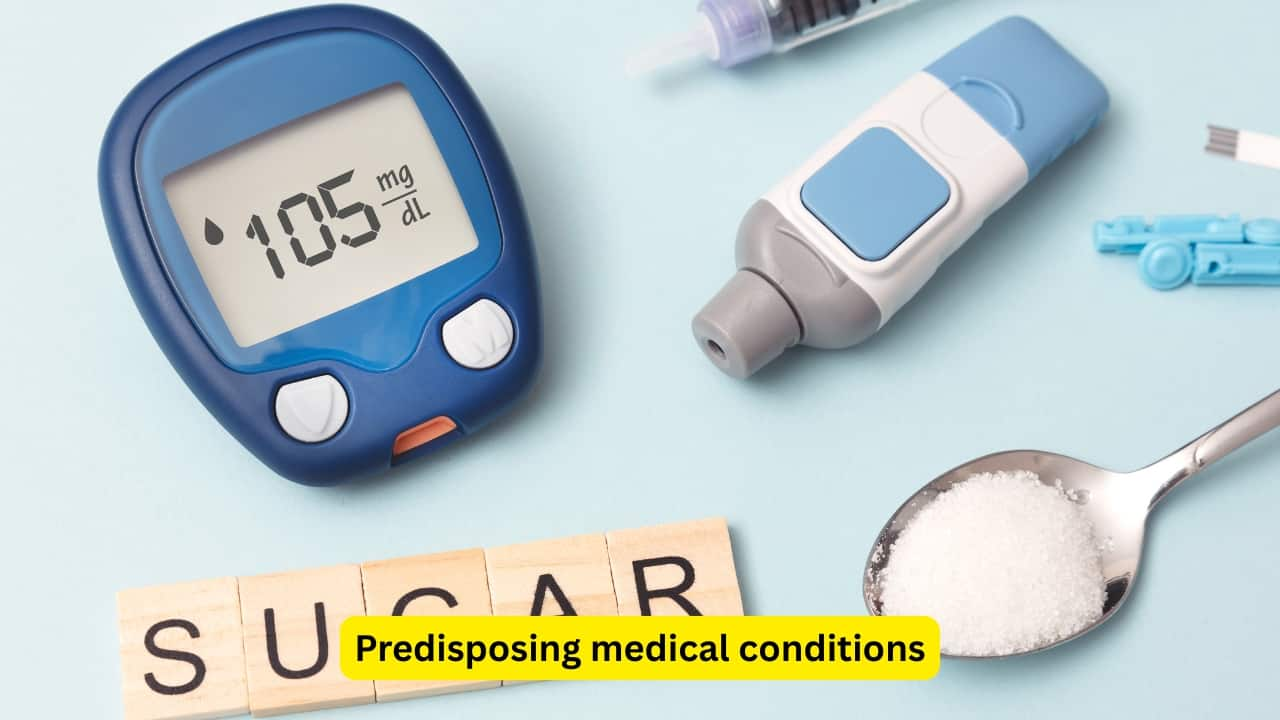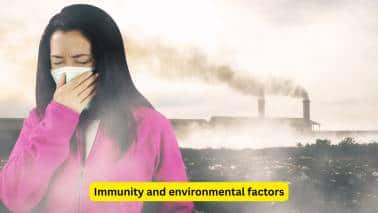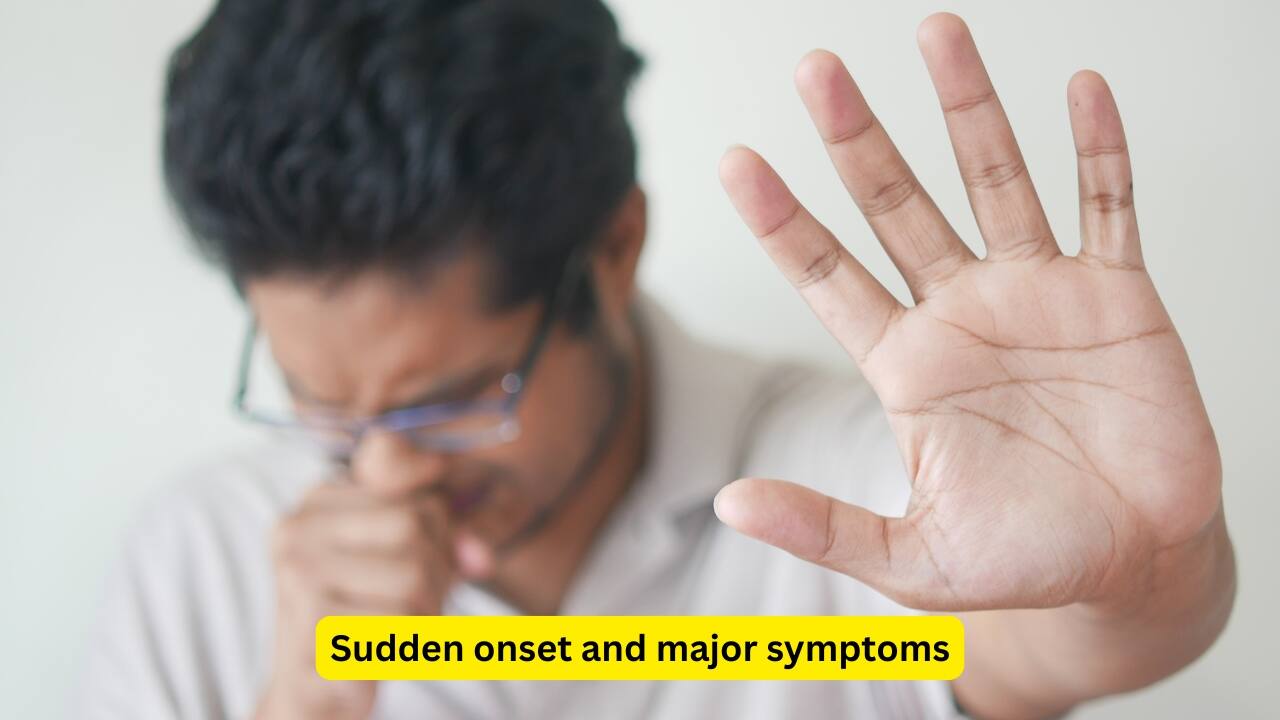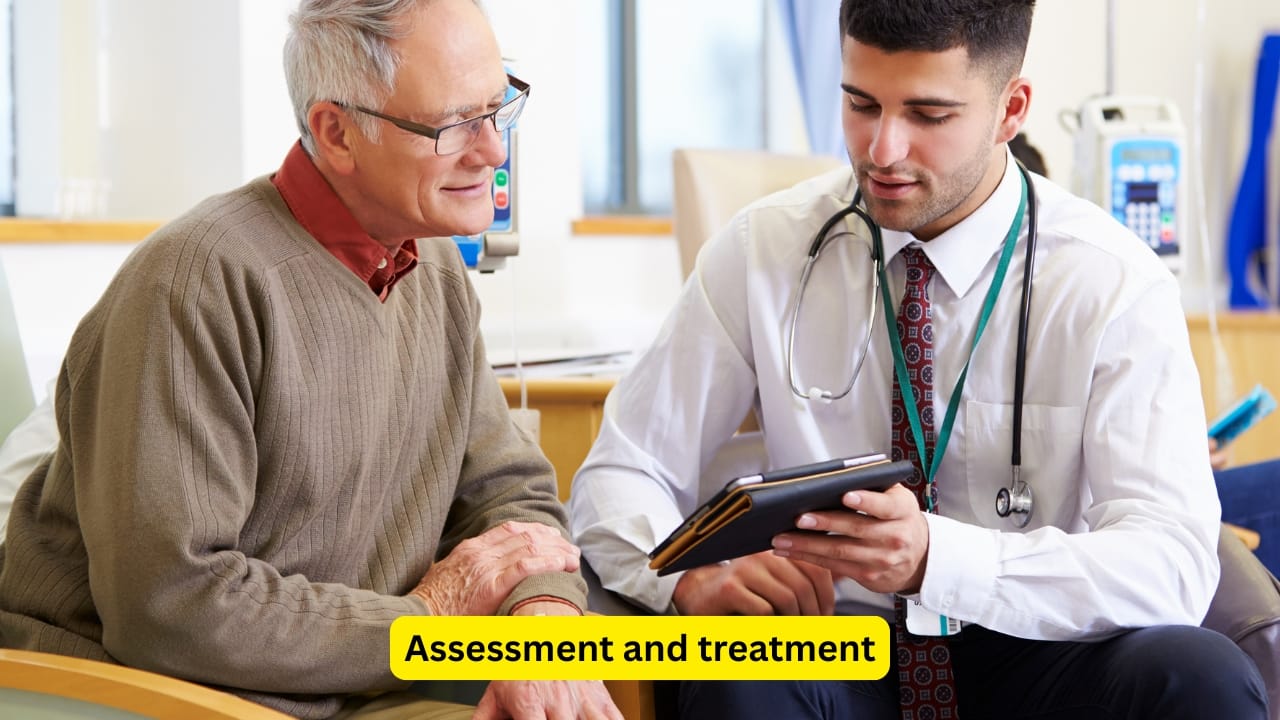10 things to know about pneumonia: It's causes, risk factors, symptoms, and management
Pneumonia is an acute inflammation of the lung parenchyma, often filling alveoli with fluid. Causes include bacteria, aspiration, radiation, and poor hygiene. Risk factors are age, co-morbidities, smoking, alcohol, and low immunity. Symptoms include fever, chills, cough, chest pain, and delirium. Diagnosis uses CURB 65; treatment includes antibiotics and oxygen.
1/10

Structure of lungs and definition of pneumonia
The lungs are made up of airways like bronchi and bronchioles which lead to air sacs called alveoli. An acute respiratory illness known as pneumonia occurs due to the inflammation of the lung parenchyma. The alveoli may get filled with fluid that occurs because of inflammation (exudate). (Image: Canva)
The lungs are made up of airways like bronchi and bronchioles which lead to air sacs called alveoli. An acute respiratory illness known as pneumonia occurs due to the inflammation of the lung parenchyma. The alveoli may get filled with fluid that occurs because of inflammation (exudate). (Image: Canva)
2/10

Infective and non-infective pneumonia
Infective pneumonia may be caused by a number of organisms like Streptococcus pneumoniae or Haemophilus influenzae. Non-infective pneumonia may be a result of aspiration of fatty or oily material into the lungs. Liquid paraffin is one of the most common causes of lipoid pneumonia.(Image: Canva)
Infective pneumonia may be caused by a number of organisms like Streptococcus pneumoniae or Haemophilus influenzae. Non-infective pneumonia may be a result of aspiration of fatty or oily material into the lungs. Liquid paraffin is one of the most common causes of lipoid pneumonia.(Image: Canva)
3/10

Causes of pneumonia
Excessive radiation can also increase the risk of development of radiation pneumonitis. Poor orodental hygiene with gross aspiration can also lead to pneumonia. Community-acquired pneumonia may affect all age groups, but is more commonly seen in the extremes of age.(Image: Canva)
Excessive radiation can also increase the risk of development of radiation pneumonitis. Poor orodental hygiene with gross aspiration can also lead to pneumonia. Community-acquired pneumonia may affect all age groups, but is more commonly seen in the extremes of age.(Image: Canva)
4/10

Predisposing medical conditions
Predisposing factors for community-acquired pneumonia include a history of upper respiratory tract infections and co-morbidities like congestive heart failure and diabetes. Chronic kidney disease and a recent episode of an influenza infection may also increase the risk for pneumonia.(Image: Canva)
Predisposing factors for community-acquired pneumonia include a history of upper respiratory tract infections and co-morbidities like congestive heart failure and diabetes. Chronic kidney disease and a recent episode of an influenza infection may also increase the risk for pneumonia.(Image: Canva)
5/10

Lifestyle-related risk factors
Other factors that may make an individual susceptible to pneumonia include cigarette, smoking and alcohol consumption. Those who have been taking corticosteroid therapy are also at a higher risk for developing an inflammation of the lung parenchyma.(Image: Canva)
Other factors that may make an individual susceptible to pneumonia include cigarette, smoking and alcohol consumption. Those who have been taking corticosteroid therapy are also at a higher risk for developing an inflammation of the lung parenchyma.(Image: Canva)
6/10

Immunity and environmental factors
Causes that reduce the immunity of an individual lead to an increased risk as well. Indoor air pollution has also been found to be a predisposing factor for community-acquired pneumonia, along with respiratory conditions like chronic-obstructive pulmonary disease and cystic fibrosis.(Image: Canva)
Causes that reduce the immunity of an individual lead to an increased risk as well. Indoor air pollution has also been found to be a predisposing factor for community-acquired pneumonia, along with respiratory conditions like chronic-obstructive pulmonary disease and cystic fibrosis.(Image: Canva)
7/10

Sudden onset and major symptoms
The affected individual may experience a sudden onset of pneumonia, with high fever and shaking chills. There may also be chest pain and breathlessness, that often begins abruptly. Cough with expectoration is common, along with a poor general condition.(Image: Canva)
The affected individual may experience a sudden onset of pneumonia, with high fever and shaking chills. There may also be chest pain and breathlessness, that often begins abruptly. Cough with expectoration is common, along with a poor general condition.(Image: Canva)
8/10

Other common symptoms
Rigors, shivering and general malaise are also common. Some people may also show signs of delirium. They may lose their appetite, and can also complain of headaches. The cough produced is short, painful and dry. It later becomes productive (with expectoration - wet cough).(Image: Canva)
Rigors, shivering and general malaise are also common. Some people may also show signs of delirium. They may lose their appetite, and can also complain of headaches. The cough produced is short, painful and dry. It later becomes productive (with expectoration - wet cough).(Image: Canva)
9/10

Additional systemic symptoms
Other symptoms include pain in the muscles, joint pain, inflammation of the heart musculature, and abdominal pain. Diarrhea and vomiting may be seen in some people. Pneumonia may also lead to skin rashes, and, in severe cases, inflammation of the meninges and sepsis.(Image: Canva)
Other symptoms include pain in the muscles, joint pain, inflammation of the heart musculature, and abdominal pain. Diarrhea and vomiting may be seen in some people. Pneumonia may also lead to skin rashes, and, in severe cases, inflammation of the meninges and sepsis.(Image: Canva)
10/10

Assessment and treatment
The healthcare provider may gauge the severity of pneumonia by using a score known as the CURB 65 score. Oxygen may be given to the patient, if their heart rate is too high or the blood pressure has fallen (hypotension). Antibiotics may aid in treatment as well along with all necessary laboratory investigations.(Image: Canva)
Disclaimer: This article, including health and fitness advice, only provides generic information. Don’t treat it as a substitute for qualified medical opinion. Always consult a specialist for specific health diagnosis
The healthcare provider may gauge the severity of pneumonia by using a score known as the CURB 65 score. Oxygen may be given to the patient, if their heart rate is too high or the blood pressure has fallen (hypotension). Antibiotics may aid in treatment as well along with all necessary laboratory investigations.(Image: Canva)
Disclaimer: This article, including health and fitness advice, only provides generic information. Don’t treat it as a substitute for qualified medical opinion. Always consult a specialist for specific health diagnosis
Discover the latest Business News, Budget 2025 News, Sensex, and Nifty updates. Obtain Personal Finance insights, tax queries, and expert opinions on Moneycontrol or download the Moneycontrol App to stay updated!






